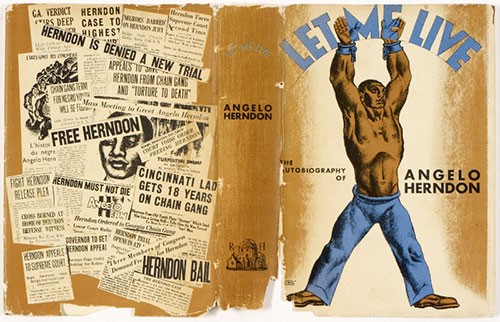
Throughout its 95-year history the Communist Party USA has always been in the vanguard of the struggle for African American equality. In fact, Black communists and white communists alike – sometimes alone, sometimes in broad-based coalitions – led the fight against Southern lynch law and Jim Crow, lily-white trade unions, and police brutality, among other issues.
Not only did Communist Party members provide the ideological and intellectual architecture for what would eventually become the civil rights movement of the 1960s, they also founded and led many of the grassroots organizations in the 1930s and ’40s that were responsible for training the emerging African American and white working class leaders who would eventually play a decisive role in the civil rights and Black Power movements.
Prominent African American party leaders like James W. Ford and William L. Patterson helped found and lead the National Negro Congress and the Civil Rights Congress, while Communists James Jackson and Esther Cooper Jackson would help found and lead the Southern Negro Youth Congress.
African American trade union party leaders like Ferdinand Smith and Alphaeus Hunton helped found and lead the National Maritime Union and the American Federation of Teachers, respectively, while Angelo Herndon helped build and lead the Unemployed Councils and the Sharecroppers’ Union.
Additionally, women African American party members often led the fight against racism and sexism, while building unions, fighting for peace and articulating the special role of women, especially Black women, in the fight for workers’ rights and socialism.
For example, Claudia Jones wrote for the Daily Worker, among other party publications, chaired the CPUSA’s National Women’s Commission, was a leader in the National Peace Council and was the editor of Negro Affairs, the publication of the party’s National Negro Commission. Eventually, Jones, who was born in the then-British West Indies, was deported due to her party activities.
Another, though lesser known, African American woman party leader, Mildred McAdory, a domestic worker and SNYC leader, became one of the first civil rights activists to utilize a tactic that would later become the rallying cry of the broad civil rights movement: McAdory refused to give up her bus seat to a white person in Birmingham, Ala., in the early 1940s. Rosa Parks would later credit SYNC and CP leaders like McAdory for their groundbreaking tactics that hastened the defeat of Jim Crow racism.
In the 1960s and ’70s African American and white Communist Party leaders and activists played major roles in the civil rights and Black Power movements.
For example, African American Communist Debbie Bell attended the founding convention of the Student Nonviolent Coordinating Committee and later moved “down South” to work for full-time for SNCC in Atlanta where she led efforts to desegregate “whites only” restaurants. Bell also helped found and lead the W.E.B. Du Bois Clubs of America, named after the great African American Communist Party USA member.
Longtime African American party chairman Henry Winston would prove to be a political mentor to hundreds, if not thousands, of African American and white civil rights leaders. As a prolific author, Winston wrote Strategy for a Black Agenda and Class, Race and Black Liberation, as well as thousands of newspaper articles, pamphlets and speeches.
Dr. Martin Luther King, Jr. said it was “an honor” to meet Winston while they were both at a Freedomways magazine event in 1968.
During the student uprisings of the late 1960s African American youth leaders like Jarvis Tyner held campus speaking tours where they helped build the struggle against the war in Vietnam, for peace and democracy. Tyner, who was also part of a U.S. peace delegation to Vietnam, would help found and lead the Young Workers’ Liberation League. Angela Davis, an activist with the Black Panther Party and then a leader of the Communist Party, became a hero to many for standing up to a frame-up attempt in the 1970s. After a mass campaign won her freedom, she then took the struggle for prison reform to national prominence.
Another prominent African American woman CPUSA leader, Charlene Mitchell, was the first African American women to run for president of the United States. She also helped found and lead the National Alliance Against Racist and Political Repression, an organization born out of, but broader than, the Free Angela Davis Committees.
And today African American Communists continue in the vanguard, fighting for equal rights. Among them are fast-food workers leading the struggle for $15 an hour and a union, which would directly benefit the largely African American women low-wage fast-food workers. It’s a struggle seen by many as an important fight against racism.
Others are union organizers filing grievances and bargaining contracts. And others are community, coalition and student leaders building the broad-based movement for social and economic justice. Others are continuing to build “down South,” where unions are once again beginning to organize.
Throughout its 95-year history the Communist Party USA has been in the forefront of the struggle for African American equality. This African American History Month – and every African American History Month – it is timely to remember the past and present contributions of African American Communists, as they continue to lay the ideological, intellectual and organizational groundwork for the next generation of leaders who will fight the struggles of tomorrow.
Photo: Art work by Hugo Gellert, well-known Communist artist. Wolfsonian-FIU Library collection.










